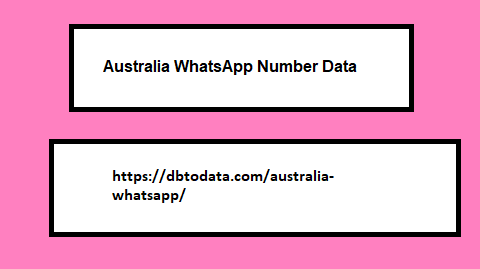Post by account_disabled on Mar 2, 2024 4:56:57 GMT -6
The main objective of a b2b website is to generate leads and new business opportunities for the company. To do this, you need to constantly optimize website content, monitor leads, qualify them and direct them to the sales team. These activities can be made automatic by integrating Hubspot CRM and CMS to the company website. Continue reading the article to find out more! Hubspot CRM and CMS: how to exploit them to increase b2b turnover CRM and CMS are two important technologies for growing your business website and ensuring it continues to generate valuable leads. But what differentiates them? CRM – customer relationship management – software tracks all leads and customers by recording and reporting their interactions with the website. The CMS - content management system - is instead used to manage the contents of the B2B site.
I n other words, a CMS helps create an experience for visitors, while a CRM helps monitor it. New Call-to-action Before we look at how they work together, let's look at what each of them does individually. CRM software: the main features Hubspot CRM is a tool that integrates the best marketing and sales tools into a single platform , leveraging the power of data to monitor how leads and customers interact with the website and make marketing and sales processes faster and more effective . Check out this video before continuing if you want to know more: Australia WhatsApp Number Data To support your business in achieving its goals, Hubspot's CRM includes the following elements. Contact management Hubspot CRM stores contacts in the form of records, each of which contains relevant customer information such as: first name company name contact info With this information recorded, salespeople can track each lead and their purchasing journey and get a clear and simple overview . Records also record relationships between sales teams and customers.

Every interaction (email, phone call, meeting, etc.) is stored in the CRM, so that salespeople know when it is time to contact individual prospects. CRMs also offer the ability to segment contacts into lists based on criteria such as location, business type, or company size. This is a fundamental support for sales, who can adopt the best strategies for each individual . Automatic data acquisition One of the key benefits of CRM software is the ability to automatically record communications between contacts and sales representatives. Instead of copying phone numbers, meeting times, emails, and responses to forms and contact forms into the system, an integrated CRM can do this automatically, eliminating a huge source of friction for the team. Deal tracking Hubspot CRM tracks what stage of the sales process each lead is in and stores it in the individual record. As contacts progress along the journey , CRM allows sales to update what stage of the deal they are in, or it is done automatically. hubspot crm Content repository To help close more deals, CRMs allow you to create a content repository that contains templates for
I n other words, a CMS helps create an experience for visitors, while a CRM helps monitor it. New Call-to-action Before we look at how they work together, let's look at what each of them does individually. CRM software: the main features Hubspot CRM is a tool that integrates the best marketing and sales tools into a single platform , leveraging the power of data to monitor how leads and customers interact with the website and make marketing and sales processes faster and more effective . Check out this video before continuing if you want to know more: Australia WhatsApp Number Data To support your business in achieving its goals, Hubspot's CRM includes the following elements. Contact management Hubspot CRM stores contacts in the form of records, each of which contains relevant customer information such as: first name company name contact info With this information recorded, salespeople can track each lead and their purchasing journey and get a clear and simple overview . Records also record relationships between sales teams and customers.

Every interaction (email, phone call, meeting, etc.) is stored in the CRM, so that salespeople know when it is time to contact individual prospects. CRMs also offer the ability to segment contacts into lists based on criteria such as location, business type, or company size. This is a fundamental support for sales, who can adopt the best strategies for each individual . Automatic data acquisition One of the key benefits of CRM software is the ability to automatically record communications between contacts and sales representatives. Instead of copying phone numbers, meeting times, emails, and responses to forms and contact forms into the system, an integrated CRM can do this automatically, eliminating a huge source of friction for the team. Deal tracking Hubspot CRM tracks what stage of the sales process each lead is in and stores it in the individual record. As contacts progress along the journey , CRM allows sales to update what stage of the deal they are in, or it is done automatically. hubspot crm Content repository To help close more deals, CRMs allow you to create a content repository that contains templates for
